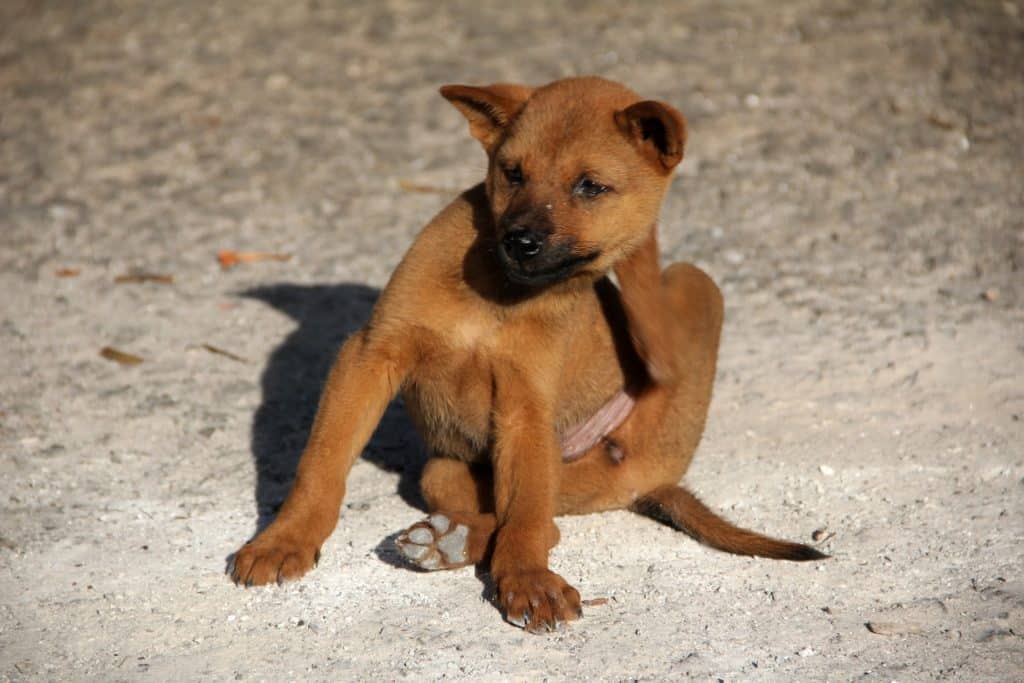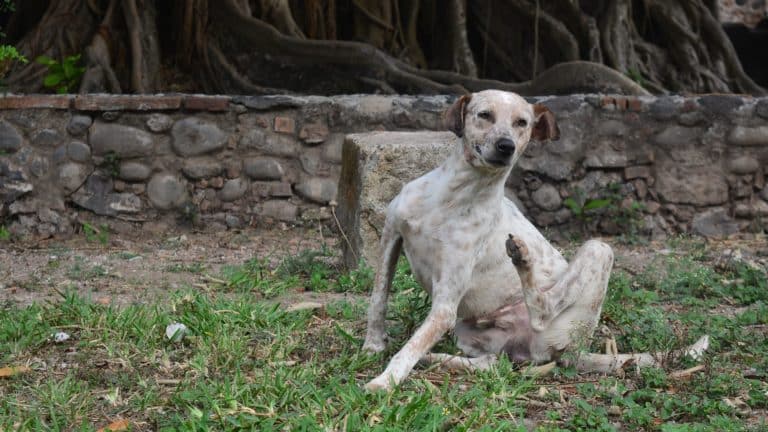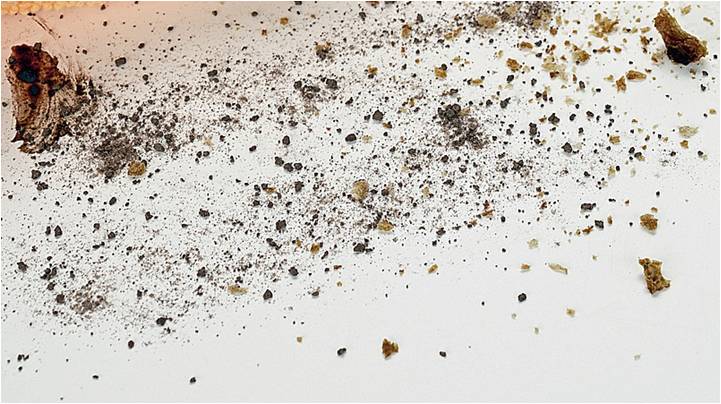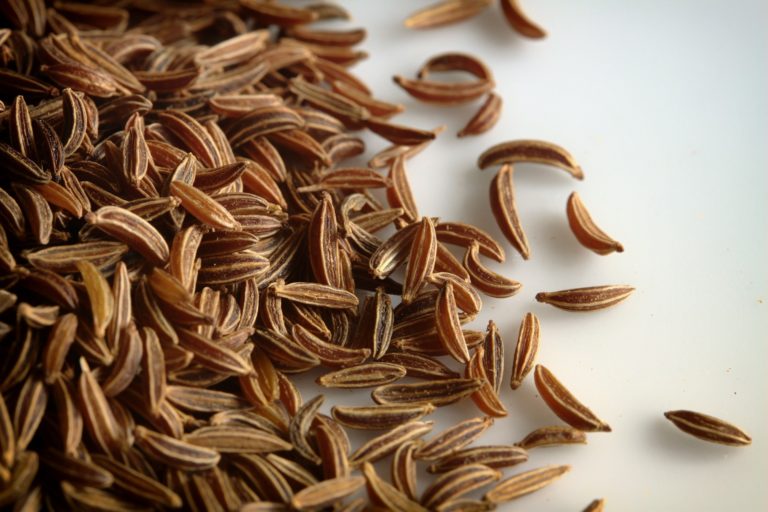Dog fleas (15 tips & home remedies that help)
- Veterinarian Mag.med.vet. Emin Jasarevic
- Updated: 2023-04-13
Your dog is scratching again and more often than usual? Most behind his ears? He probably has fleas! In this guide you will learn the 15 best tips against these parasites. I'd be surprised if you can't implement some of these tricks today. Also, for this article I have Advice from veterinarian Mag.med.vet. Emin Jasarevic obtained. Note: This article is written for the german country.

Fleas are very annoying, but fortunately there are some methods to get rid of them.
What exactly is the dog flea?
The dog flea (Ctenocephalides canis) is a parasitic insect. Its main host are dog species.
How big is a dog flea? It is between two to four millimeters long, has a reddish-brown color and no wings. Its body is elongated and laterally flat.
How high does a flea jump? Fleas can jump up to 50 cm wide and 25 cm high.
The laterally flat body and their chitinous carapace allows them to move easily through the hairs of a dog's fur.
The female flea can lay up to 20 eggs in a day. In their lifetime, that's about 2000 eggs.
How long does a flea live? The flea has a life span of about three weeks.
For its development cycle, it needs a Room temperature of 25 °C. In addition, a humidity of ideally about 80 %. The egg itself takes about 30 weeks to develop into a flea.
A female flea, sucking blood for the first time in the host, lays her first eggs after 24 to 48 hours. Many of them fall from the fur to the ground. This is not a disadvantage for the eggs. They can continue to develop there as well.
After about one to ten days, the first larvae hatch from the eggs. They feed on feces and organic remains. They also like to hide under textile and carpet fibers or cracks.
The larvae go through several stages until they finally emerge as an adult flea.
Fleas suck blood for about 30 minutes a day. They can survive without a host for two to eight weeks before the first bloodsucking.
However, after their first feeding, they must consume blood at least once a day. Dog fleas do not like to switch to an intermediate host because they cannot reproduce in intermediate hosts.
They occur mainly in rural areas. The city dog is more likely to be infested by cat or human fleas.
A few home remedies for flea infestation compared
- Control vermin and insect species
- Immediate and long-term effect up to six weeks
- in the household, animal environment
- Solution for dropping on the skin
- effective against fleas, ticks and hair lice
- Highly effective contact antiparasitic agent
- Dog shampoo against fleas, mites and ticks
- With nourishing provitamin B5
- With the repellent active ingredient Margosa
No products found.
- Easily removes fleas and lice
- Also for sensitive dogs
- Robust and durable
How is a flea transmitted?
If your dog is infested with fleas, it has nothing to do with a lack of hygiene. Nor does it mean that your pet is not groomed thoroughly enough.
The flea is most often transmitted through the environment. Your pet can bring home a flea after walking the dog. In the house is an ideal environment for the flea to lay its eggs. Thus, it can multiply in the apartment, especially near the place where your furry nose sleeps.
The flea eggs develop in a few days into larvae and hide in dark places in the apartment. This can also affect your car. At the end of their development stage, they hatch out of their cocoon and look for an ideal host.
A contact with already infested conspecifics can also be one of the transmission routes.
Possible consequences of flea infestation

The flea secretes anticoagulants after puncturing the skin. These are active substances that stimulate the Inhibit blood clotting. The substances mostly cause allergic reactions and inflammations a dog pays to its surroundings.
This flea saliva allergy can lead to severe itching (especially behind the ears, back, root of the tail and belly). The affected quadruped scratches itself violently at the affected areas. Where he can reach with his mouth, he even starts to nibble or bite. The scratching and biting can lead to Tissue damage lead.
At the puncture sites, there is predominantly Redness. Most often in these places also appear Swelling and wheals. It can also lead to Hair loss come.
Fleas can also Tapeworms because they also feed on egg packages of the tapeworms. If one of these fleas is accidentally swallowed by a dog, it can become infected. The tapeworm thereby populates the small intestine and sticks to the intestinal mucosa. This can lead to Appetite fluctuations and Diarrhea lead.
How do I know if my dog has fleas?

The particle test
Whether your protégé has fleas or not is relatively easy to recognize. If your dog regularly and violently scratches, it is very likely that he has fleas.
The other possibility would be if he has a food allergy. Then I recommend you the article on allergy in dogs and the topic Hypoallergenic dog food.
It is best to take your darling into the bathtub. Go through his fur with a flea comb. If there are small dark colored parasites hanging from the comb, they are probably fleas. If you do not have a flea comb, it is enough to stroke your hand through his fur a few times.
As you comb through your faithful companion, particles will fall to the floor. Take a damp kitchen paper or a damp white cloth and place it on the particles. Press lightly so that the particles stick to the cloth.
These particles could be flea droppings. Should the Redden particles on the cloth, then it is flea droppings.
This is because flea droppings contain blood and they turn reddish in a moist substrate. If this is not the case, then the black crumbs are dirt particles. You can rest assured.
How do we get rid of the fleas?
Just ridding your dog of fleas is half the job.
Should you have noticed that your furry companion is infested with fleas, your home and car certainly are too. In addition, your apartment is not only infested with adult fleas, but also their eggs and larvae. Intensive cleaning is called for!
It is best if you do this action in parallel. So you have to treat your furry AND rid your habitat of these parasites.
How do I rid my rooms of them?
The most affected areas are those where your dog spends a lot of time or regularly.
So the immediate environment of his sleeping place, dog bed, blanket and pillow. Upholstery and carpets, cracks or crevices. Everywhere where it is pleasantly damp, warm and dark, flea alarm is announced!
Note that fleas or their eggs can survive for several months. That's why it is advisable if you want to keep your Cleaning action regularly repeated. Recommended for three weeks, every two to three days.
1. vacuum & steam cleaning
You can fill the dust bag of your vacuum cleaner beforehand with Flea powder treat. Thus, the fleas are killed immediately with the first contact.
For the major cleaning operation would be a Steam cleaner also good.
Where should I vacuum? Everywhere:
- Especially in cracks and crevices of upholstered furniture
- Carpets (upper and lower surface)
- Corners and edges of the rooms
- All furniture also rear and top
After vacuuming, dispose of the dust bag outside your home in the trash can.
It would be good if, after disposing of the dust bag, you wipe the vacuum cleaner with a cloth that you have previously treated with a disinfectant home remedy.
2. wash textiles
All textiles with wash at least 60 °C.
If the textiles are not suitable for a 60 °C wash, you can put them in the freezer for about a week.
3. wet wipe
Damp wipe the floor, walls, corners and edges. Use a disinfectant household cleaner. It would be good if you occasionally renew the mop water.
4. dispose of objects
Even if it's hard for you, it's better to dispose of the items that can't be cleaned.
This also includes all textiles that, for example, cannot be washed at 60 °C or do not fit in the freezer.
Possibly you could also contact a get advice from a professional laundry, whether they have a way to effectively treat the textiles.
5. buy flea spray
Use an environmental spray or fogger against fleas for the rooms in your home. These products contain synthetic active ingredients, which destroy both the fleas and eggs.
Please follow the manufacturer's instructions for use. During application, your four-legged friend should not be in the premises, including children. As a precaution, use a mask when treating the premises. You can also hire an expert exterminator for this.
6. car, cottage, garage do not forget
The infestation of fleas applies to all premises where your pet stays. This may be your car, cottage, garage or hobby cellar.
So pay attention to all the premises, so that everything is pure from fleas and remains so.
4 Means against flea infestation
With a quite violent acute infestation, I recommend you to contact your veterinarian. Because it would be another burden for your darling if you would experiment with him unsuccessfully.
For a not so severe infestation, there are the following preparations you can use:
1. spot-on dog preparations
The active ingredients in the spot-on ensure that fleas and eggs are killed.
The solution of the preparation spreads on the skin. The ingredients are stored in the sebaceous glands and regularly secreted to the surface.
Depending on the manufacturer's instructions, you need to apply the contents of the package on the neck of your four-legged friend. The neck is a place that he can not lick.
Divide the fur at the nape of the neck. The skin should be visible as much as possible. Apply the liquid directly to the skin.
You must not bathe your protégé for 48 hours after the treatment. The preparation works for about three to four weeks and should be renewed regularly. Otherwise it loses its preventive effect.
2. flea powder
Flea powder contains silica. The silica extracts their body fluid when in contact with fleas. Thus, they dry out and die.
You should use the powder carefully into the fur of your furry nose. The powder is very fine dust. Therefore, please make sure that the mouth and eyes of your pet do not come into contact with it unnecessarily:
The best way to avoid this is to put a slightly damp cloth on his face. A mouthguard for you would also be good.
As long as the manufacturer does not give any other instructions, you should let your protégé once treat with it daily. You can also sprinkle the environment of your quadruped, his sleeping place or the like with it.
Here you should pay attention to the fact that some fur noses do not tolerate the fine dust. Therefore, handle it in moderation at the beginning and watch your darling closely whether he tolerates the powder.
3. flea shampoo
Flea shampoos contain chemical agents that ensure that both fleas and larvae or eggs die.
For use, you should study the manufacturer's package insert.
4. deworming cure
As already mentioned, fleas also feed on egg packages of tapeworms. This can lead to the fact that your little one is additionally infested with tapeworms.
Your dog does not necessarily have to get tapeworms because he has fleas. However, I recommend that you give your dog a worming treatment within one to two weeks as a precaution.
How can I prevent?
Besides the spot-on, there are also the following preparations that you can use as a precautionary measure. These products are not suitable for acute infestation and serve more as a precaution:
1. flea tablets
Flea tablets are oral preparationswhich usually have a similar effect as spot-on preparations. It is best if your furbearer takes them together with his food.
The tablets contain active ingredients that the fleas absorb through a bite via the blood and then die. Some flea tablets can be used just like a spot-on preparation as a therapy in an acute phase during a flea infestation. However, this depends on the composition of the tablet.
Your veterinarian can certainly recommend the appropriate preparation.
2. flea collar
The flea collar is also more precautionary.
The tapes have a Duration of action from three to five months. Good collars provide additional protection against ticks and some types of mosquitoes.
It's a good idea to take the tape off when you're washing your mess.
3. flea comb
A flea comb alone is not enough to control the parasites or prevent them.
However, you can use it to find out whether the means of acute control lead to success. Also, it is very useful to make regular line tests.
There are also flea combs or brushes that you can plug directly into your vacuum cleaner. Thus, particles or even parasites will end up directly in the vacuum cleaner.
Keep in mind, however, that some quadrupeds are terrified of the sound of a vacuum cleaner and the investment for such a comb would then be in vain.
Home remedies against fleas
In the case of a severe infestation, we advise you to seek advice from a veterinarian or canine healer.
Even though there are numerous home remedies on the Internet that are supposed to be helpful against fleas, caution is called for here!
Why?
Most often in guidebooks for the control of fleas are suggested essential oils. Excessive essential oils can irritate your pet's nasal mucosa and sense of smell.
Please do not forget that your furry nose has a much more sensitive sense of smell than humans themselves. The scents of the oils are therefore much more intense than ours.
That is why you should use home remedy recipes very carefully and get good advice, even if they should come from nature. Not all remedies that help people also help our dogs.
It is better to stay away from home remedies that have not been proven to be harmless to our loved ones.
1. black cumin oil

Black cumin oil contains thymoquinone.
This active ingredient helps to keep fleas away from the body of your four-legged friend. It is also effective against ticks.
You can add a few drops of black seed oil to your best friend's food or drinking water as a precaution.
For external use you give four to five drops on the neck of your favorite. The oil also helps to care for his skin.
You can learn more about black cumin oil on our page "11 Facts about black cumin oil for dogs" find
2. coconut oil

Coconut oil contains lauric acid. Fleas, ticks and mites "can not smell" this substance. As soon as they notice the smell, they take flight.
You can put your darling immediately before each walk rub coconut oil (head, legs, neck and ears). Thus, you can well protect him from these annoying "guests".
For this purpose, depending on the size of the dog is enough maximum amount the size of a walnut off. You can also use the coconut oil with the help of a spray bottle evenly on the body of your favorite and then rub.
You can learn more about coconut oil on our page "9 important facts about coconut oil for dogs" find
Frequently Asked Questions
Your dog's flea infestation is not related to his hygiene. Fleas are usually transmitted by other hosts, i.e. dogs. This can happen, for example, when you walk your dog.
Fleas are especially annoying for your dog. They cause severe itching and skin irritation. They can also transmit tapeworms. Fleas are life-threatening only in exceptional cases and they can be treated well.
To get rid of fleas permanently, you need to rid both your dog and your living area of them. For your dog, there are special remedies and combs against fleas. In your apartment you should clean regularly and thoroughly with the vacuum cleaner and wash all textiles at over 60 °C.
Fleas can live without a host for over a month. Therefore, it is also necessary to clean your apartment regularly over a period of 3-4 weeks.
Female fleas can lay 20 eggs a day after fertilization by a male. Fleas live for about 3 weeks. Their eggs either remain on the host or fall off and continue to develop, for example, in carpets.
My Conclusion
Even if your dog wears a flea collar or is regularly protected with other preparations from these unscrupulous blood hunters, it can dstill happen that he is infested with fleas!
First you should stay calm. There are now very many ways to fight this invasion to the last flea.

I am a veterinarian and writer on animal health topics. Animals are my passion, and it is my personal goal to create medically accurate articles and videos to educate pet owners as much as possible.
Share Now:






